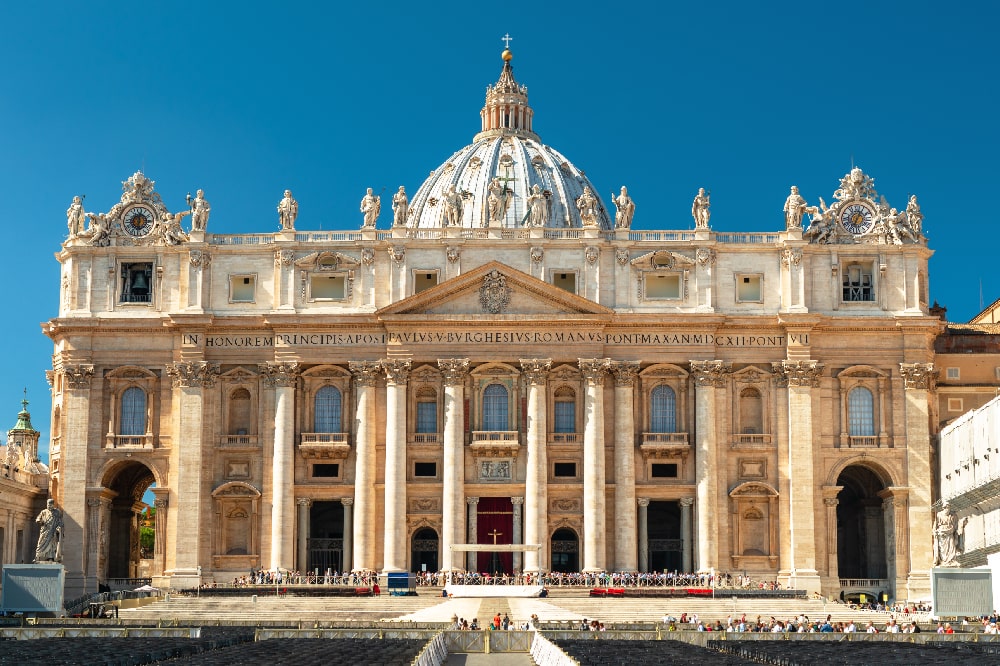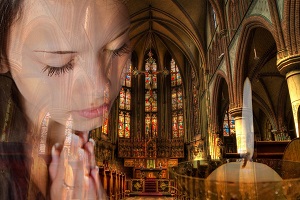Why aren’t the sacred plaster statues that we find in the church considered as objects of idolatry, but as an integral part of every Christian’s profession of faith?
We are used to seeing numerous sacred plaster statues in our churches depicting Jesus, the Madonna, saints and angels. In a previous article dedicated to sacred furnishings, we explained how everything that is part of the appearance of a church, outside and especially inside, is an essential element of the scenography necessary to best host the rites that are celebrated there. It is not just about furnishing elements, such as altars, pulpits, kneelers, baptismal fonts, tabernacles, altar crosses, holy water fonts, each of which however also has a definite practical and religious use. The issue is even broader and involves every single architectural and decorative element, from the distribution of space to the number of columns, even the size of the entrance door. This is because the church is the place destined to be the setting for the Liturgy, and, as such, it must be an expression of solemnity and sacredness. This solemnity is transmitted to the faithful who gather there, in ways that have evolved, over the centuries. If in ancient times the most common way to demonstrate to Christians the importance and sacred dimension of the place of worship was to flaunt wealth and opulence, with the use of precious materials and precious decorations, today there are other approaches, whose minor aim is to arouse amazement, and reverential fear, and above all to a dimension that stimulates spiritual dialogue with the individual and with the reunited community.
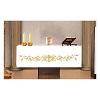
In this scenario of religious suggestion, also sacred statues are placed, which nevertheless deserve a more in-depth discussion. Religious statues made of plaster, resin, fibreglass, and even before that of wood and stone, have been the subject of heated discussions and even controversies within the same church for a long time. Why? Although it is evident that the plaster madonnas, rather than the plaster statues representing the Savior, assist prayer in an extremely effective way. Who does not keep in their hearts the childhood memory of a particular statue to which they loved to go to pray, or where they felt compelled to light a candle?
Yet still today there is no lack of fierce controversy regarding the adoration reserved for statues of saints and blessed. The reason is simple, even if this is not the place to immerse ourselves in theological dissertations. In Leviticus, we read: “Do not turn to idols and do not become gods of molten metal. I am the Lord your God ” (Leviticus 19:4). Here is the issue that has divided the church in two for a long time. How much could the veneration of a statue representing Jesus or the Virgin or a saint lead to idolatry?
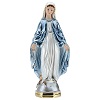
In reality, Christians answered this question early, and without departing from the Holy Scriptures. In fact, in the Old Testament, many passages make us understand how God not only did not frown upon the creation of images and symbols that aroused in those who contemplated them an even greater faith and religious enthusiasm. With the advent of Jesus the Savior, then, this prerogative of creating figurative representations in support of prayer has increased even more. By becoming man, Jesus gave a physical, incarnate image of a God who was previously invisible. It is he himself who affirms it when he says: “Whoever sees me sees the Father“(John 12:45).
After many discussions and speculations, which were held during historical councils, today in the Catechism of the Catholic Church we read: “the Christian cult of images is not contrary to the first commandment that proscribes idols. Indeed, ‘the honour rendered to an image belongs to whoever is represented in it’, and ‘whoever venerates the image, venerates the reality of whoever is reproduced in it’. The honour bestowed on sacred images is a ‘respectful veneration, not an adoration that befits God alone.” (CCC, no. 2132).
The difference is exactly a question of terms. Given that for Christianity, adoration is a prerogative of God, and only His, the veneration of a statue that has only the symbolic value of evoking the true goal of prayer in those who turn to it, is not idolatry.
Unlike pagan cults, in which it was believed that the divinities lived within the simulacra dedicated to them, in the Christian religion there is always the awareness that one finds oneself in front of material representations of presences that remain ineffable.
This allows us, when we enter a church, to be able to linger with our gaze on these representations that evoke in us all the hope of salvation, all the amazement and religious yearning brought by the Incarnate Word. Here, in this meaning, the veneration of sacred statues is not only allowed but desirable.
On certain occasions, then, such as particular religious holidays, or even in the context of processions, or other forms of popular devotion, so widespread especially in our country, the plaster statues become active protagonists of the liturgy, allowing everyone to access and participate in an even more direct and enthusiastic way to collective prayer.
What does a plaster statue have to be like to best express its task?
To best fulfil their task of bringing the faithful closer to the divine, the sacred statues must be well made, with attention to detail, emanate a sense of beauty and serenity. In particular the plaster Madonnas, but also the representations of Christ as the Good Shepherd, or those of the angels, the more pleasing to the eye and sweet, the more they will constitute an instrument of spiritual elevation for those who will stop to contemplate them.
There are plaster statues and statuettes of all sizes, suitable for any context. Despite what one might think, a plaster statue can also be placed outdoors, as the material it is made of easily lends itself to waterproofing. For this reason, you may find a Madonna in plaster or another sacred statue even in gardens and aedicules exposed to atmospheric agents.
In our online store, you will find statues and figurines of all sizes and types. We point out some of the most requested by the churches, chosen both for their considerable dimensions (between 70 and 100 cm), for the accuracy of the rigorously handcrafted realisation, and the beauty of the subjects depicted.
For example, the plaster statue of St. Michael is 100 cm high, weighing 35 kg, which admirably depicts St. Michael about to crush the devil. The colours of the Archangel’s robe are bright red and blue. The wings and the sword, inserted individually, are gilded, as is the chain with which he immobilizes the devil, while the breastplate of the Saint is silver.
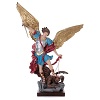
Even the statue of Merciful Jesus 90 cm high in mother of pearl plaster can embellish any church and place of worship. It is made and hand-painted in Italy, and represents Jesus wrapped in long light robes and radiating red and blue rays, with his blessing hand raised.
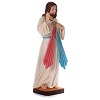
If, on the other hand, you are looking for a statue of the Madonna, you can choose between the plaster statue with the mother-of-pearl effect of the Madonna of Lourdes, 80 cm high, which represents Mary in the traditional white robe with blue drapery and her hands joined as a sign of prayer, or the statue by Maria Rosa Mystica and mother of the church, also in mother of pearl plaster, 70 cm high, in which the Virgin wears white clothes and has on her breast the three mystical roses (white, red, yellow) which respectively represent prayer, sacrifice and penance.
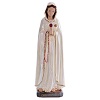
Again Jesus, wearing white and red robes with golden edges and the Sacred Heart burning in his chest, is depicted in the plaster statue with mother-of-pearl effect depicting the Sacred Heart of Jesus, 80 cm high.
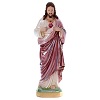


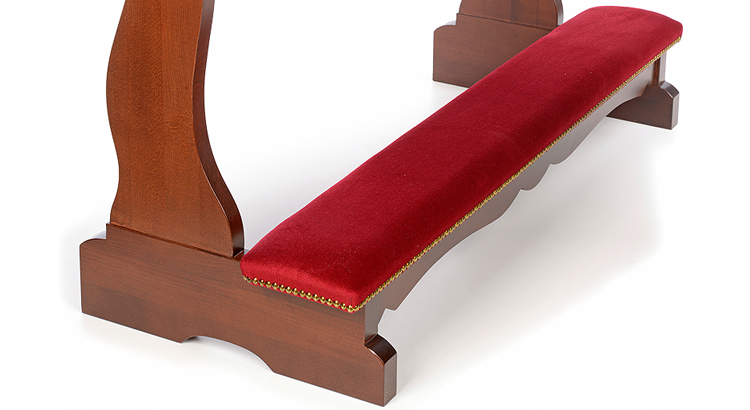
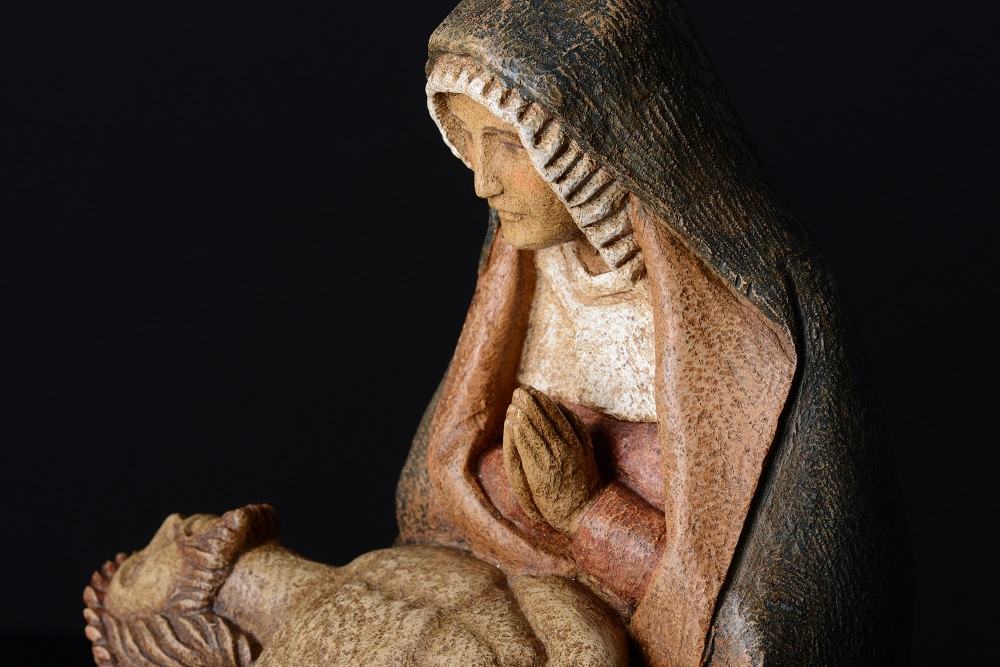
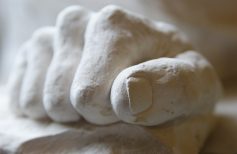
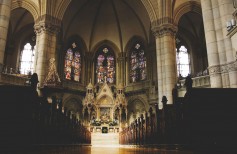
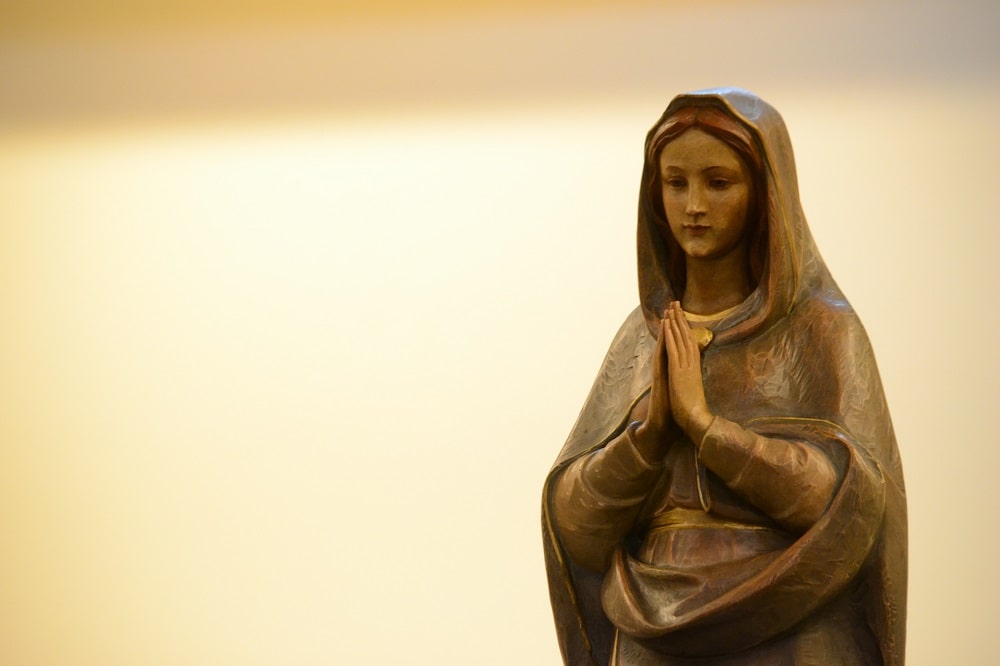
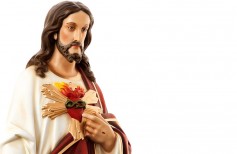
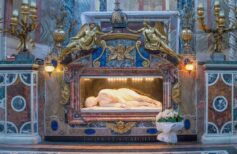

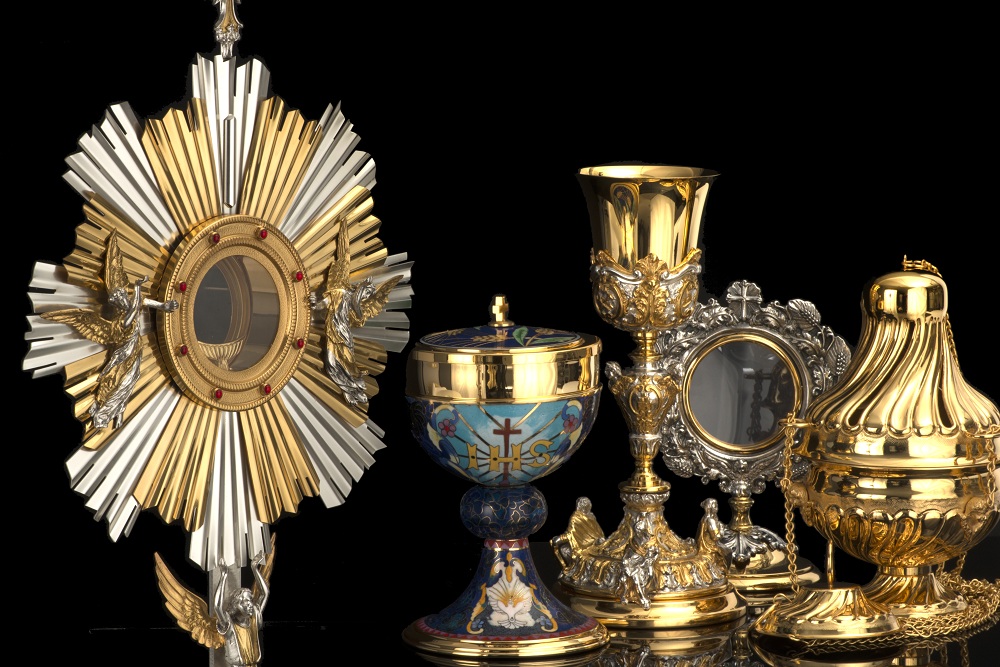








 25 August 2025
25 August 2025

